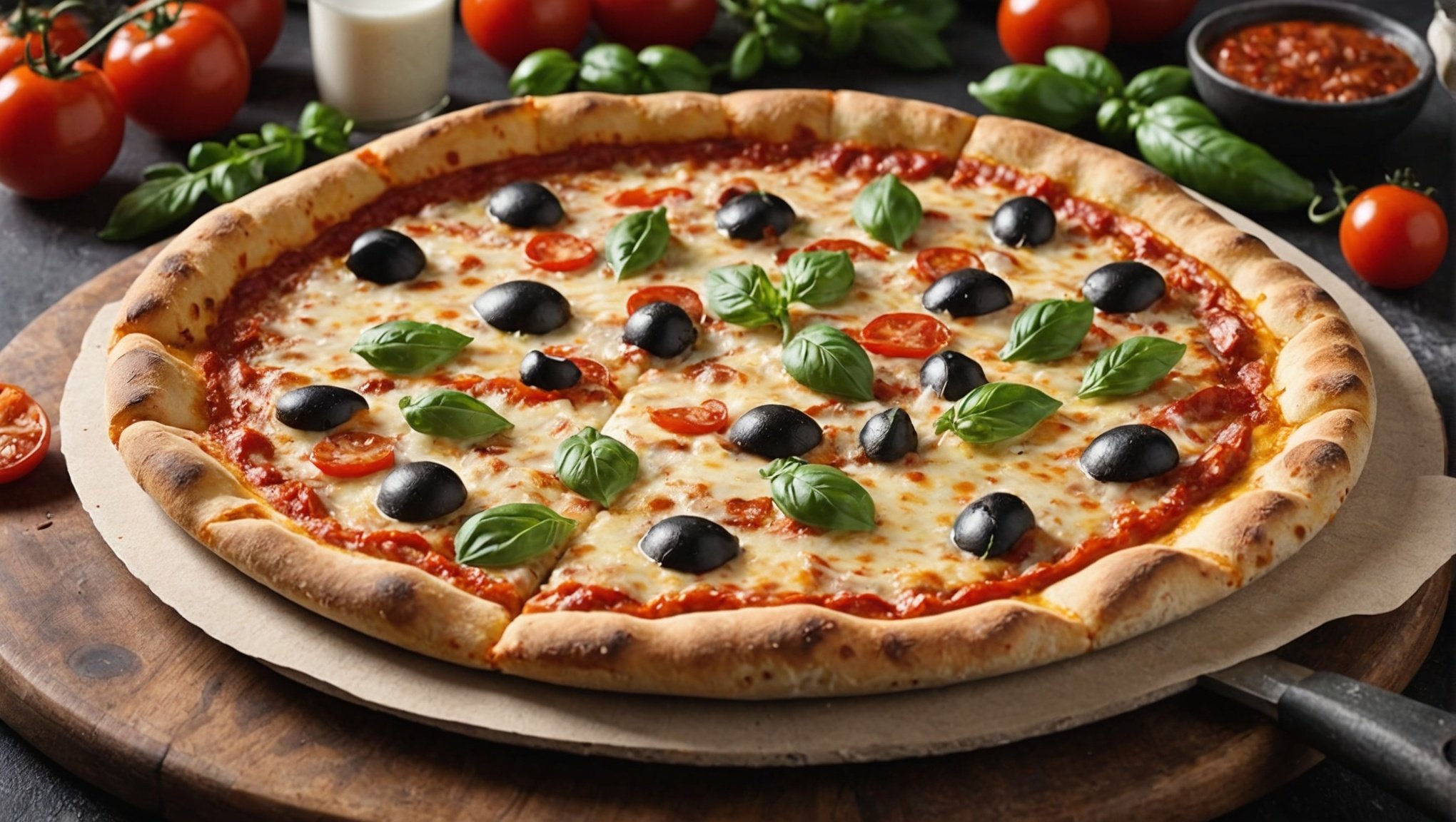Achieving the perfect pizza at home requires more than just fresh ingredients; it starts with the right tools. A quality pizza stone plays a vital role in creating that coveted crispy crust that elevates your homemade pies. Understanding the essential features of a pizza stone can significantly enhance your cooking experience. Whether you’re a novice or a seasoned chef, uncover the key elements that will transform your oven into a pizzeria and ensure your pizzas impress every time.
Essential Features of a Pizza Stone
Understanding the pizza stone features can significantly enhance your cooking experience, especially when aiming for a crispy crust. The choice of material is crucial. Ceramic, stone, and cast iron each offer unique benefits. Ceramic is lightweight and heats evenly, making it a popular choice for home cooks. Stone, often made from cordierite, is excellent for heat retention, providing that perfect crispy base. Cast iron, though heavier, offers durability and superior heat distribution.
In the same genre : Mastering Safe Mandoline Slicing: Top Techniques for Injury-Free Food Prep
Thickness plays a vital role in achieving optimal heat retention. Thicker stones hold heat longer, ensuring that your pizza cooks evenly and thoroughly. However, they may take longer to heat up. It’s essential to balance thickness with your cooking needs and patience level.
Another key feature is the porous surface of the pizza stone, which aids in moisture absorption. This characteristic is crucial for achieving a crispy crust, as it draws out moisture from the dough, preventing sogginess. When selecting a pizza stone, consider these cooking essentials to ensure your homemade pizzas are both delicious and perfectly textured.
Topic to read : Choosing the Perfect Fish Poacher for Healthy Cooking: A Guide for Health-Conscious Chefs
Comparison of Different Pizza Stones
Choosing the right pizza stone can transform your homemade pizza experience. Here’s a detailed pizza stone comparison to help you decide.
Ceramic Pizza Stones
Ceramic pizza stones are popular due to their lightweight nature and even heat distribution. They are ideal for beginners and casual cooks. However, they are prone to cracking under thermal shock and require careful handling. Price-wise, they are generally affordable, making them a great entry-level option. They excel in situations where consistent, moderate heat is needed.
Cordierite Pizza Stones
Cordierite pizza stones are known for their exceptional durability and heat retention. They withstand high temperatures without cracking, perfect for achieving a crispy crust. Although they take longer to heat up, their robustness makes them ideal for frequent use. They are priced moderately, offering good value for those serious about pizza baking.
Cast Iron Pizza Stones
Cast iron pizza stones provide superior heat distribution and durability. They are perfect for those who need a versatile cooking tool, as they can also be used on stovetops and grills. While heavier and more expensive than other types, their longevity and multi-use capabilities justify the investment. Ideal for those who appreciate a robust cooking experience.
Tips for Using a Pizza Stone in Home Ovens
To achieve the best results when using a pizza stone, it’s essential to master a few home oven tips.
Preheating Techniques
Begin by preheating your oven with the pizza stone inside. This step ensures the stone reaches the desired temperature, crucial for a crispy crust. Aim for at least 30 minutes of preheating. A longer preheat can enhance the stone’s heat retention, improving your pizza cooking techniques.
Placement in the Oven
Position the pizza stone on the lowest rack of your oven. This placement promotes even cooking by allowing the stone to absorb heat directly from the oven’s base, which is generally the hottest area. Avoid placing it too close to the oven’s top to prevent uneven cooking.
Cooking Times and Temperatures
For optimal results, bake your pizza at a high temperature, around 230-260°C (450-500°F). Cooking times vary, but a typical pizza should bake for 10-15 minutes. Monitor closely to avoid overcooking. Adjust times based on your oven’s performance and the thickness of your pizza crust.
Maintenance and Care for Pizza Stones
Proper pizza stone maintenance is essential to ensure its longevity and optimal performance. Understanding the best cleaning practices and storage methods can prevent common issues like cracking and chipping.
Cleaning Methods: Dos and Don’ts
When cleaning pizza stones, avoid using soap or detergent, as they can be absorbed by the stone and affect the taste of your food. Instead, use a dry brush or a damp cloth to remove any food residue. For stubborn stains, a paste of baking soda and water can be gently scrubbed onto the surface. Always allow the stone to cool completely before cleaning to prevent thermal shock.
Preventing Cracking and Chipping
To prevent cracking, never expose your pizza stone to sudden temperature changes. Avoid placing a cold stone into a hot oven or vice versa. Additionally, refrain from cutting directly on the stone, as this can lead to chipping.
Storing Your Pizza Stone for Longevity
Store your pizza stone in a dry, cool place. Ensure it is not stacked under heavy items to avoid damage. Following these longevity tips will help maintain your pizza stone’s performance and extend its lifespan.
Recipe Ideas for Perfect Pizza
Exploring pizza recipes can elevate your homemade pizza experience, especially when cooking with a pizza stone. Here are some delightful options to try.
Classic Margherita Pizza
A homemade pizza staple, the Margherita combines simplicity with flavour. Use fresh mozzarella, ripe tomatoes, and basil leaves. Preheat your pizza stone as per usual, then bake at 230°C (450°F) for 10-12 minutes. This classic recipe is easily adaptable—consider adding a drizzle of balsamic glaze for a twist.
Pepperoni and Cheese Delight
For a pepperoni and cheese delight, start with a generous layer of tomato sauce, followed by mozzarella and pepperoni slices. Bake at a high temperature for 12-15 minutes. For a creative variation, sprinkle some crushed red pepper or add sliced olives for extra zest.
Gourmet Veggie Pizza
Create a gourmet veggie pizza by topping your dough with a mix of bell peppers, mushrooms, and artichokes. Add goat cheese for a tangy touch. Bake at 240°C (475°F) for about 15 minutes. Experiment with different veggies or herbs to make this recipe your own, ensuring a delightful culinary experience.






